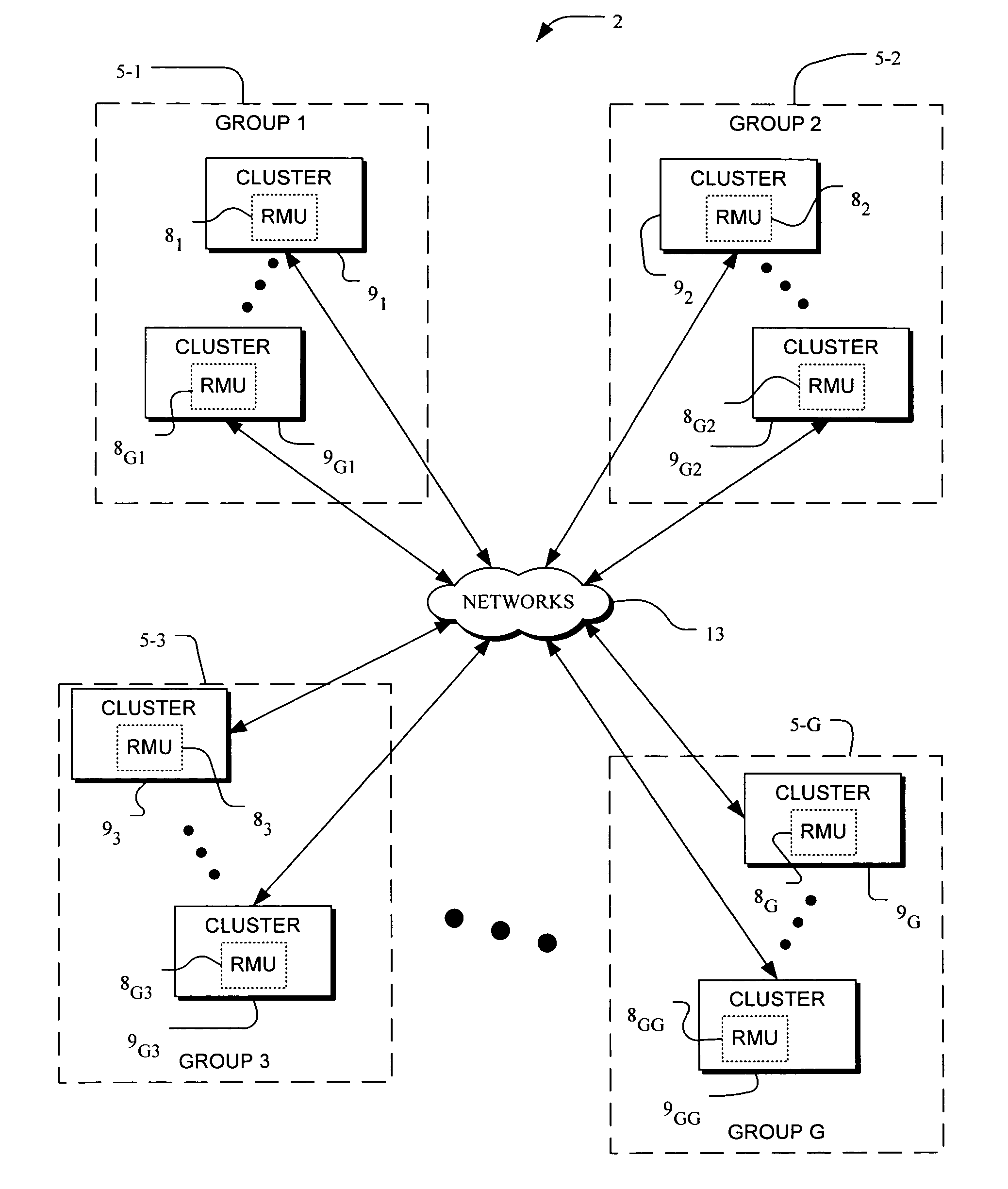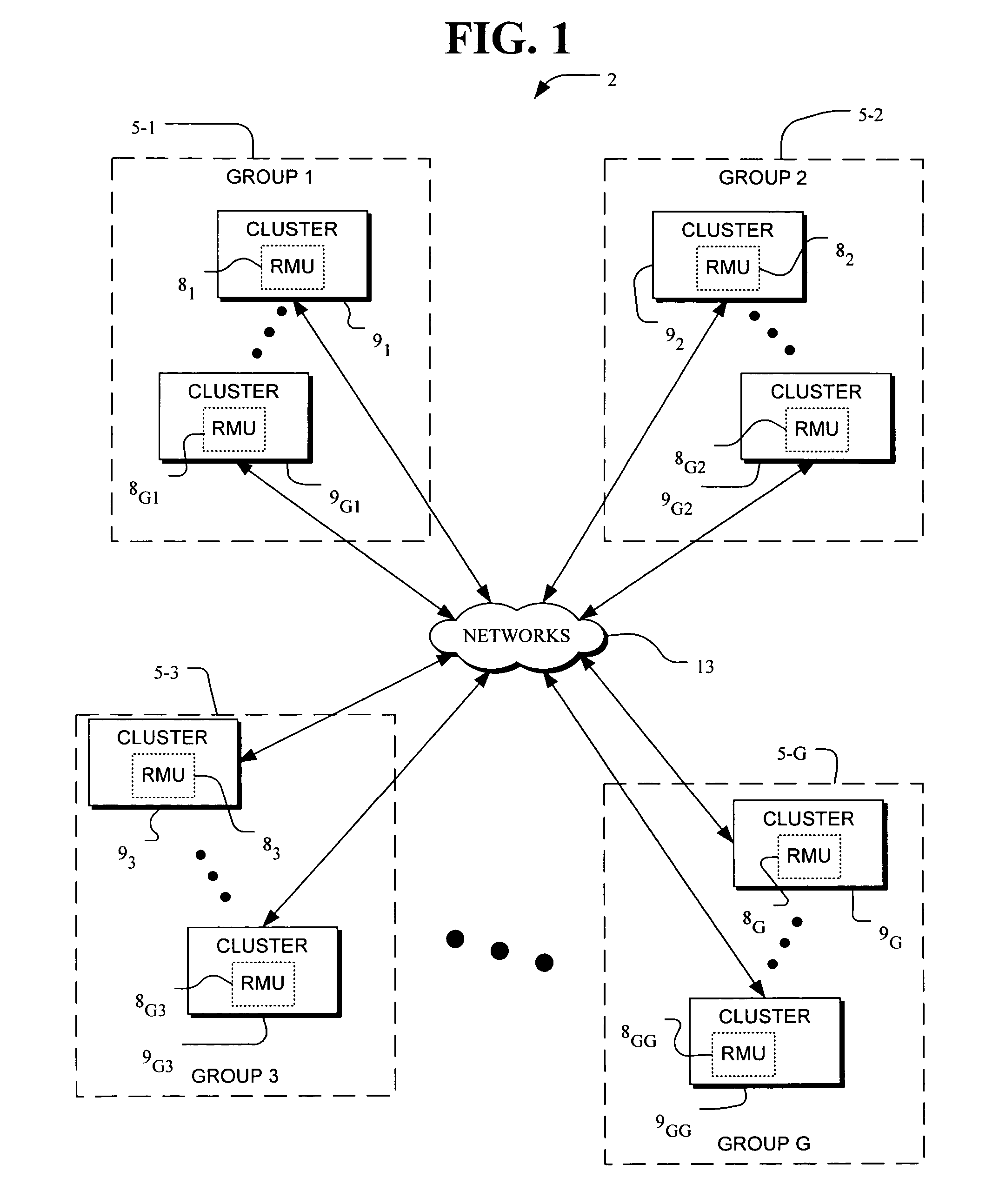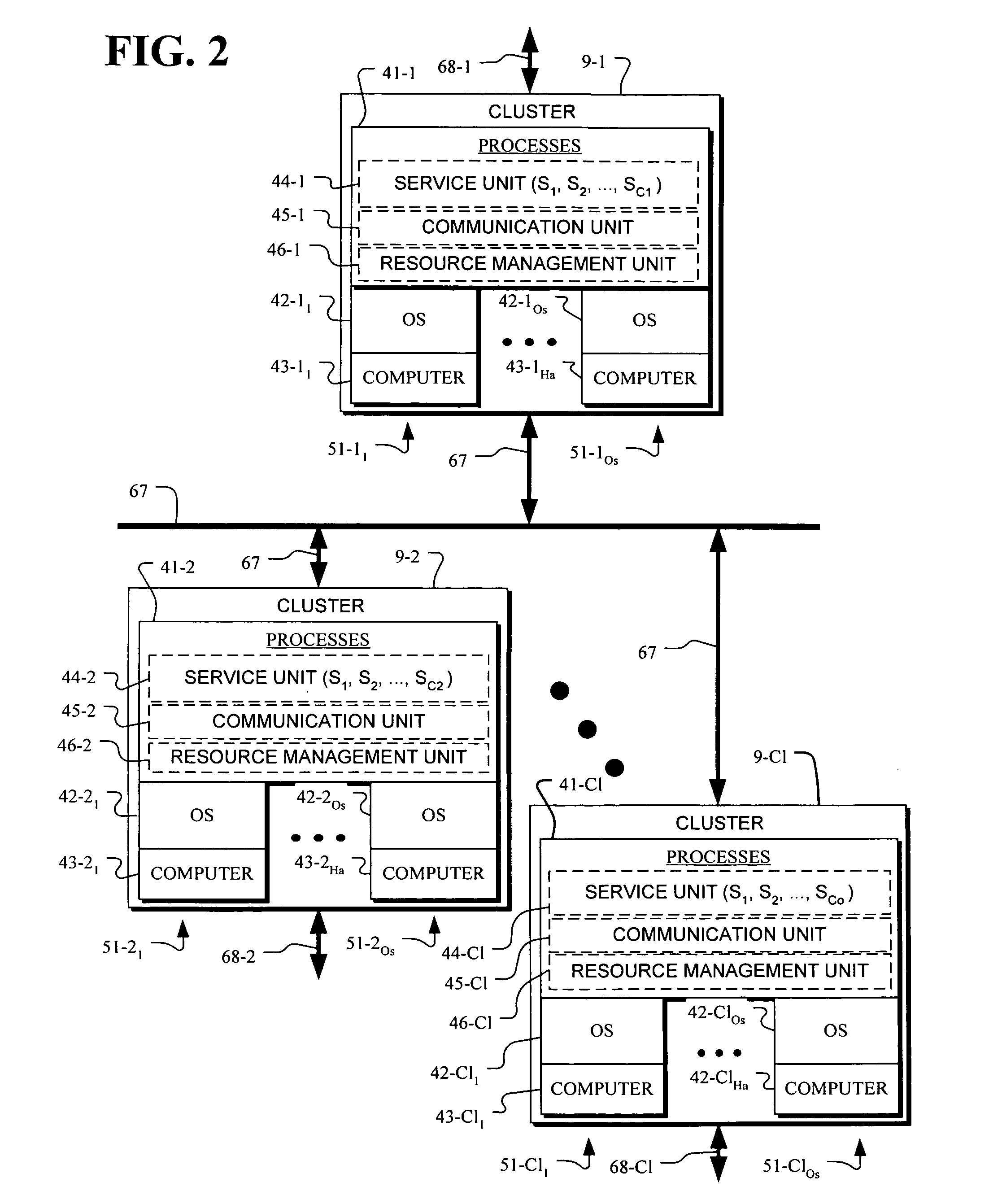Fault-tolerance framework for an extendable computer architecture
- Summary
- Abstract
- Description
- Claims
- Application Information
AI Technical Summary
Benefits of technology
Problems solved by technology
Method used
Image
Examples
Embodiment Construction
[0041] Cluster Groups--FIG. 1
[0042] In FIG. 1, a plurality of clusters 9 are distributed in different groups 5 including groups 5-1, 5-2, 5-3, . . . , 5-G and connect through the networks 13 to form an e-commerce system 2. The groups 5 are organized on geographical, company, type of information processed or other logical basis.
[0043] In one example, the groups 5 of clusters 9 in FIG. 1 are distributed geographically around the world. The group 5-1, for example, has clusters 9, and specifically clusters 91, . . . , 9G1, located in Europe. Group 5-2, by way of example, includes clusters 9, and specifically clusters 92, . . . 9G2, located in Asia. Group 5-3, for example, includes clusters 9, and specifically clusters 93, . . . , 9G3, located in the eastern United States and group 5-G, by way of example, includes clusters 9, and specifically clusters 9G, . . . , 9GG, located in the western United States.
[0044] In a geographic distribution example, the FIG. 1 worldwide e-commerce system ...
PUM
 Login to View More
Login to View More Abstract
Description
Claims
Application Information
 Login to View More
Login to View More - R&D
- Intellectual Property
- Life Sciences
- Materials
- Tech Scout
- Unparalleled Data Quality
- Higher Quality Content
- 60% Fewer Hallucinations
Browse by: Latest US Patents, China's latest patents, Technical Efficacy Thesaurus, Application Domain, Technology Topic, Popular Technical Reports.
© 2025 PatSnap. All rights reserved.Legal|Privacy policy|Modern Slavery Act Transparency Statement|Sitemap|About US| Contact US: help@patsnap.com



